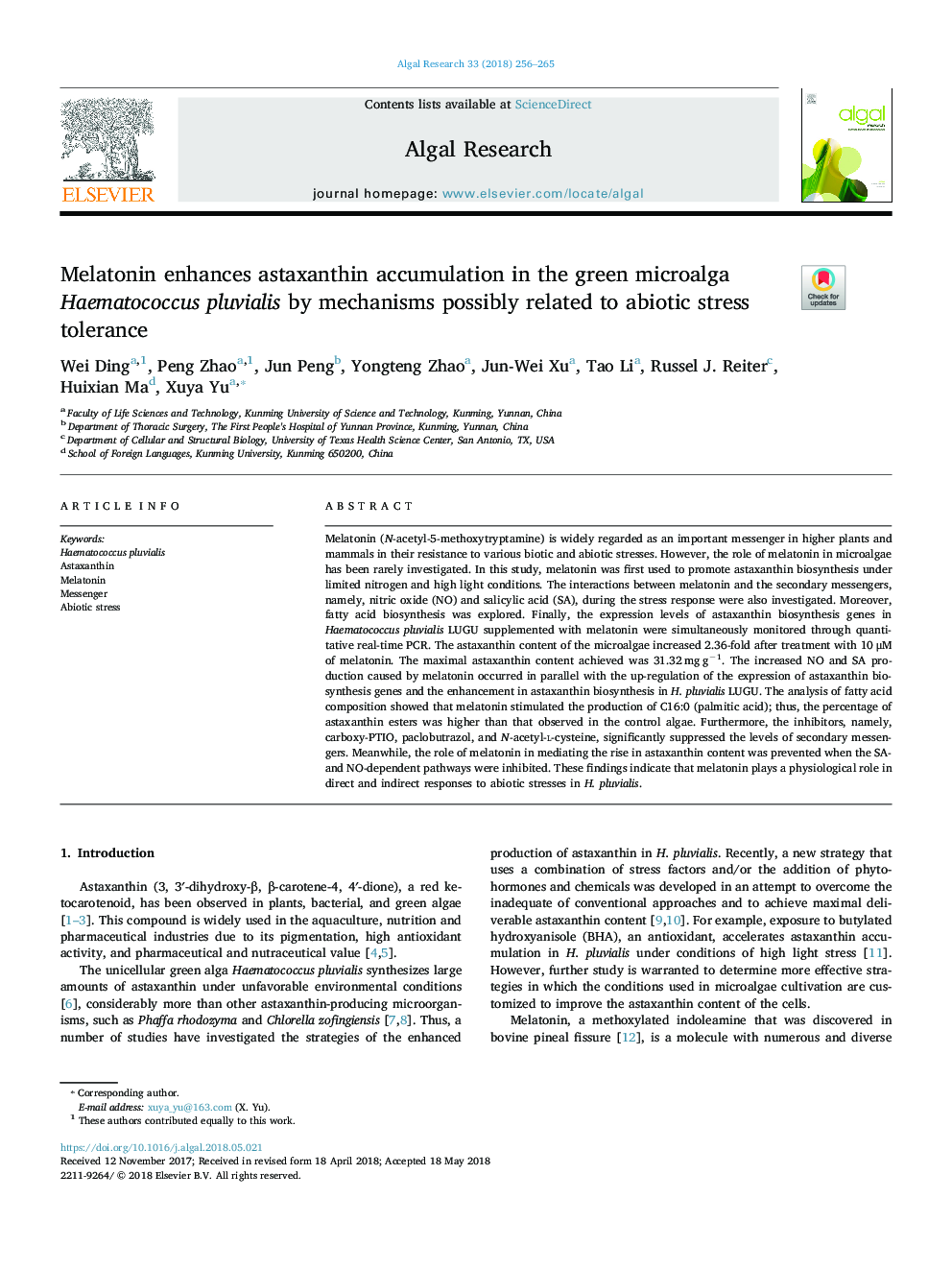| Article ID | Journal | Published Year | Pages | File Type |
|---|---|---|---|---|
| 8085633 | Algal Research | 2018 | 10 Pages |
Abstract
Melatonin (Nâacetylâ5âmethoxytryptamine) is widely regarded as an important messenger in higher plants and mammals in their resistance to various biotic and abiotic stresses. However, the role of melatonin in microalgae has been rarely investigated. In this study, melatonin was first used to promote astaxanthin biosynthesis under limited nitrogen and high light conditions. The interactions between melatonin and the secondary messengers, namely, nitric oxide (NO) and salicylic acid (SA), during the stress response were also investigated. Moreover, fatty acid biosynthesis was explored. Finally, the expression levels of astaxanthin biosynthesis genes in Haematococcus pluvialis LUGU supplemented with melatonin were simultaneously monitored through quantitative real-time PCR. The astaxanthin content of the microalgae increased 2.36-fold after treatment with 10â¯Î¼M of melatonin. The maximal astaxanthin content achieved was 31.32â¯mgâ¯gâ1. The increased NO and SA production caused by melatonin occurred in parallel with the up-regulation of the expression of astaxanthin biosynthesis genes and the enhancement in astaxanthin biosynthesis in H. pluvialis LUGU. The analysis of fatty acid composition showed that melatonin stimulated the production of C16:0 (palmitic acid); thus, the percentage of astaxanthin esters was higher than that observed in the control algae. Furthermore, the inhibitors, namely, carboxy-PTIO, paclobutrazol, and Nâacetylâlâcysteine, significantly suppressed the levels of secondary messengers. Meanwhile, the role of melatonin in mediating the rise in astaxanthin content was prevented when the SA- and NO-dependent pathways were inhibited. These findings indicate that melatonin plays a physiological role in direct and indirect responses to abiotic stresses in H. pluvialis.
Related Topics
Physical Sciences and Engineering
Energy
Renewable Energy, Sustainability and the Environment
Authors
Wei Ding, Peng Zhao, Jun Peng, Yongteng Zhao, Jun-Wei Xu, Tao Li, Russel J. Reiter, Huixian Ma, Xuya Yu,
